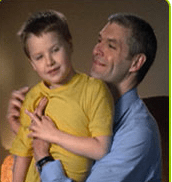Advertisement
Study: Brain Differences Detectable In Autistic Children At Six Months Old

Here's some of the news release from Autism Speaks, one of the groups that funded the research:
The changes in brain development that underlie autism spectrum disorder (ASD) may be detectable in children as young as 6 months, according to research reported online today in the American Journal of Psychiatry. While core behaviors associated with ASD (impaired social communication and repetitive behaviors) tend to be identified after a baby’s first birthday, researchers found clear differences in brain communication pathways as early as 6 months in infants who later received a definitive diagnosis of ASD.
As part of the Infant Brain Imaging Study (IBIS), senior author Joe Piven, M.D., director of the University of North Carolina’s Carolina Institute for Developmental Disabilities in Chapel Hill, and his colleagues studied early brain and behavior development in 92 infants. These infants had older siblings on the autism spectrum and, so, were at elevated risk of developing ASD themselves.
“These results offer promise that we may one day be able to identify infants at risk for autism before the behavioral symptoms are present,” says study co-author Geri Dawson, Ph.D., Autism Speaks chief science officer. “The goal,” she adds, “is to intervene as early as possible to prevent or reduce the onset of disabling symptoms.” One promising area of follow-up research is to identify the specific genetic and biological mechanisms behind the observed differences in brain development.
In their report, the researchers describe using a magnetic resonance imaging technology called diffusion tensor imaging to evaluate the brains of infants at 6 months, 1 year and 2 years of age. This allowed them to create three-dimensional pictures showing changes over time in each infant’s “white matter.” White matter represents the part of the brain that is particularly rich in the nerve fibers that form major information pathways between different brain regions.
The 28 infants who went on to develop ASD showed different white matter development for 12 of the 15 major brain pathways studied compared with 64 infants who did not go on to develop ASD. At 6 months, there was evidence that the white matter fiber tracts were different in infants who later developed ASD from those of infant siblings who did not develop ASD, and over time it appears that there is a slowing in white matter development. It is a brain marker that differs in children who go on to be classified with autism. These developmental differences may suggest slower white matter development during early childhood, when the brain is making and strengthening vital connections.
This program aired on February 17, 2012. The audio for this program is not available.
